Originally posted by Pompano
Glad to see some further interest in horses. After all, haven’t nomads been using them for centuries?
| Quote: | Originally posted by LancairDriver
Horses have been used in warfare throughout history up to and including the ongoing Afghan war. A read of Custers book "My life on the Plains"
reinforces the essential role of the horse on both sides during the latter half of the nineteenth century.
I'm sure Custer was well aware of the Mongolians horsemanship as history of warfare involving horses was an important part of the Army's Westpoint
curriculum during the period he was there. He had a firsthand look at the capabilities of the Indians and formed his firsthand opinion on that
experience. Our opinions are confined to what the various history books tell us. The Indians were introduced to horses much later than the Mongolians
but they progressed in the care and taming of the horse very rapidly. Unlike the Mongolians, they more than held their own under fire from modern
weapons, which the Mongolians didn't have to face. |
Indeed, the American natives (Indians) did not learn horsemanship until after the Spanish had left horses behind in the 15th & 16th Centuries.
Early in the exploration of the Americas (beginning with Columbus' voyage in 1493), Iberian horses arrived on Spanish galleons. Horse warfare in
early colonization of the Americas was formidable. In 1532, 168 Spanish soldiers—including 62 on horseback—won the battle against 80,000 Inca foot
soldiers by attacking the crowd on horseback and slicing through their quilted armor with steel weapons. Some of these horses escaped or were
abandoned and became feral. Today's relatives of these escapees are the mustangs found in the western United States.
Wild Mustangs I photographed in Teddy Roosevelt Natl Park in ND. This park contains one of the largest concentrations of mustangs
left running wild.

More typical mustangs..
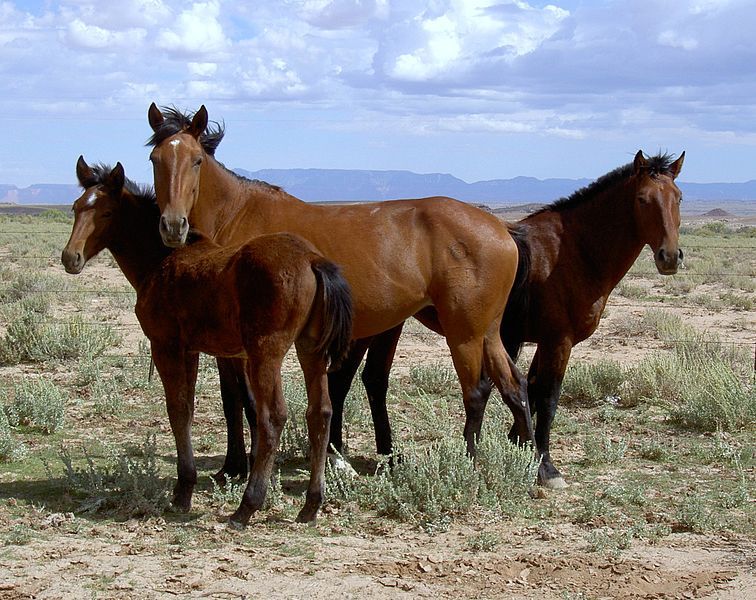
So much has been written & sterotyped about the Spanish invasion, cowboys, & Indians that it is often forgotten that the Americas are the home
of the modern, single-hoofed horse, ‘Equus’. Having evolved from the tiny, one-foot-tall and three-toed Hyracotherium some two million years
ago, the modern horse migrated from North America to Asia over the Bering Strait land bridge. When the first humans crossed the strait in
the opposite direction after about 20,000 B.C., they found the Great Plains teeming with horses, which for several millennia were among the many
species of megafauna hunted by the first Plains peoples. Then, some 8,000 to 10,000 years ago, the horse followed the mammoth, camel, and other
large American mammals into extinction, apparently as the victim of overhunting and a changing climate.
The horse that the Spanish brought to the Americas was the famed barb horse, a mix of Arab and Spanish stock. Bred to survive in the
North African deserts, these small but sturdy animals found a fitting ecological niche in the dry, grass-covered Southern Plains.
Barb Horse
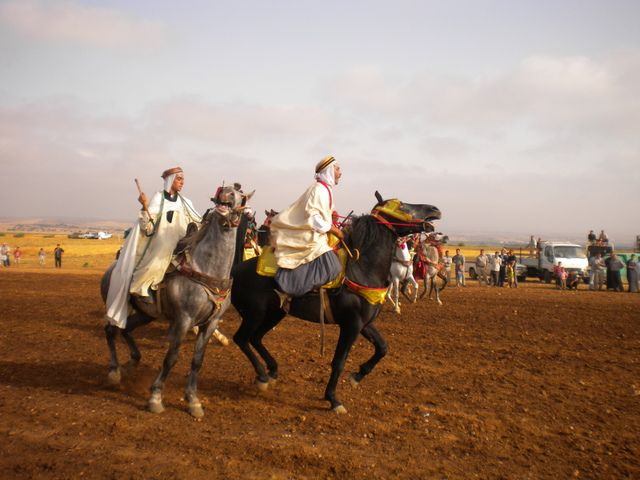
The impact of the horse was most dramatic on the Southern Plains, where a true equestrian culture emerged. Comanches, Kiowas, Arapahos, and Cheyennes,
who became specialized horse raiders and herders, maintained large herds of surplus animals for trade with other Native groups and European Americans.
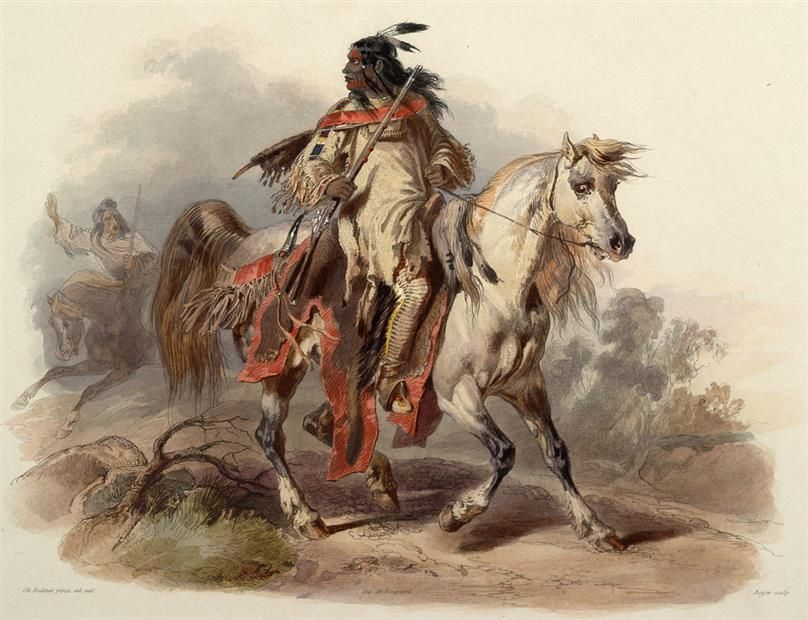
So attractive was this new horse culture that many groups–most notably Comanches, Lakotas, and Cheyennes–abandoned their traditional homelands for an
equestrian existence in the Plains. In doing so, they became some of the most refined and celebrated equestrian societies in history, matched only by
the great horse cultures of Asia. It is also possible that horses triggered a decline in women's status because the bison hunt became more the domain
of the mounted male hunter rather than of the society at large. Little did these gals know that Women’s Lib was just around the corner…
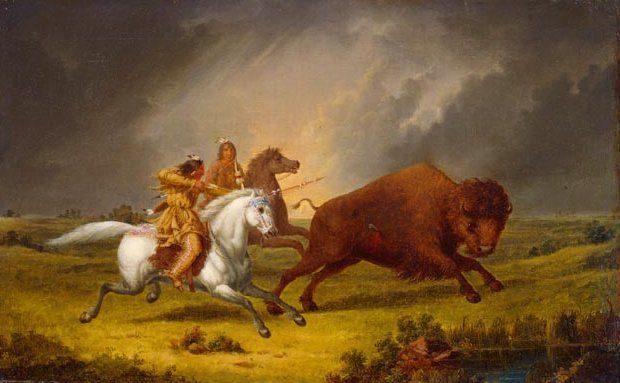
The beginning of the reservation period after 1850 marked the end of the Plains horse cultures, but it did not end the association between
Indians and horses. Rodeo has offered another important way to maintain the connection with horses and break some bones while having fun. On a more
abstract level, most people still link Plains Indians and horses almost automatically, and the Hollywood film industry has sold the visual image of
the mounted Plains warrior as the stereotype for all North American Indians. To many Indians the horse continues to symbolize their traditional
cultures and lifeways as they existed before the European American takeover. From celebration parades and art to actual herds on reservation fields,
horses are still integral to Plains Indians.
As said, the American natives adapted quickly to this new horse lifestyle and it changed their whole culture dramatically. Since travel is one of the
defining features of human development, so the history of the horse is the history of civilization itself. Imagine riding versus walking the long
distances of the Great Plains. They also became more nomadic because of the need for grazing areas.
| Quote: | Originally posted by Skipjack Joe
Well, I guess I have to stand up for the Mongolians on this one.
Unlike Native Americans Mongolians actually won battles. In fact they sacked China several times. That's a 5000 year old civilization. The european
knights with all of their armor and castles could not stand up to Mongols with primitive weapons on horseback. They held virtually all of asia from
the pacific to Poland for hundreds of years. Historically speaking they had one of the greatest empires on this planet ... primarily due to their
horsemanship.
I'm no expert on Mongolia but from what I know their lives are totally integrated with horses. They ride them, they eat them, they clothe themselves
with them, they heat their homes with their dung. It's like a symbiotic relationship. Their culture is centered around the horse. Their people move
with their horses to provide optimal grazing lands.
And why are we quoting Custer anyway? The man was a vainglorious loser. He was dead last in his class at West Point as I recall. He had a history of
serious blunders in the army that resulted in demotions. His men didn't trust him. He was basically a prima donna who rose through the ranks due to
his reckless courage. Poor judgement and recklessness - a bad combination that doomed his men at the Little Big Horn. |
You are certainly correct, Igor. For at least 6000 years the horse has been an ever-present ally in war and peace. Civilizations have risen and
fallen on their backs and evidence of the horse’s use is everywhere to be seen. Unverified by other experts, archaeologists in Saudi Arabia reported
finding traces of a civilization that had domesticated horses nearly 9,000 years ago. Then again, other research places the first domestication of
wild horses as happening in Mongol territory, namely on the ‘western Eurasian steppe’ - an area now shared by Kazhakstan, southwest Russia and
Ukraine. This species, the so called “Mongolian wild horse” is thought to be the ancestor of all domesticated horses. Known today as
“Przewalski’s Horse” (see photo below) the breed was named after the Russian explorer who discovered them. The horse quickly spread
to the west and became domesticated there also. A stone drawing was unearthed showing horse drawn chariots around 2500 BC in what is now Iran.
Presently, the oldest undisputed evidence of horse domestication date back to 2,000 B.C., when horses were buried with parts
of harnesses and chariots. A report published March 2009 suggested the Botai culture of Kazakhstan had domesticated horses as beasts of burden and to
use their milk as a food source around 3500 B.C.

The Mongols & Horses
On warfare and conquest, I would think that many things helped to make Genghis Khan’s armies so successful. First, he had a huge army, some
historians figuring to over 250,000 standing deployment with that many in reserve back home. Second, they were highly mobile and excellent horsemen.
Their tough little horses could gallop at speed for 6 hours. Third, their weapons were superior…named the short composite bow, a remarkable powerful
weapon for both long and short range, using armor-piercing arrows. The riders could hit a target while at a full gallop. Truly invincible and
conquered most the Far East and Eastern Europe. The design of that bow to use with horse warfare put his army as the most dangerous among all
combatants. They were the ‘tanks’ of the day. Here’s what they looked like mounted and the design of the re-curve bows. The pull on most of these
bows was about 165lbs…strong even for today. Each archer carried 60 arrows and could easily draw and fire them rapidly with accuracy. Add to that
the long swords and spears and it’s easy to see how they decimated their opponents.
There is a traditional saying in Mongolian: "A Mongol without a horse is like a Bird without the wings".

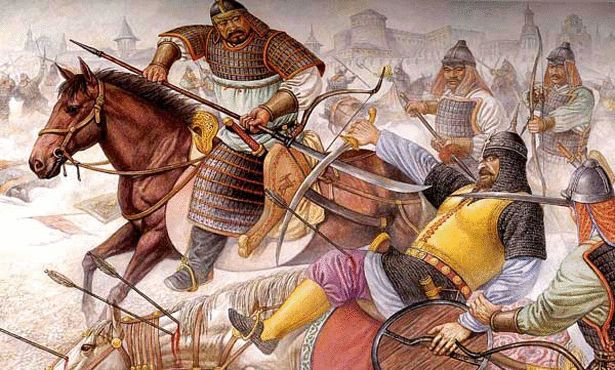
Said by some to have been the best horsemen ever were the Jurchens or Jurcheds, a Tungusic people who inhabited the region of Manchuria (present-day
Northeast China) until the 17th century, when they adopted the name Manchu.
Other great horse cultures of ancient times were: Scythians, Huns, Turks, and Parthians
But from all the verifiable evidence so far, we know that humans have hunted horses across the Eurasian steppe for at least 100,000 years. Analysis
of bones found at two sites near Astana, the capital of Kazakhstan, suggests that 6,000 years ago, the Botai people were the first to turn their prey
into a means of transport.

In case you’re interested, here is a timeline showing domestication of other animals.
Tamed Kingdom
Humans have domesticated numerous animal species over the past 12 millennia, beginning with man's best friend, the dog. Here is a sampling of roughly
when and where the taming of some familiar critters occurred.
10,000 B.C. • Dog: Israel/Iraq
7000 B.C. • Goat: Iran • Sheep: northeast Syria/southeast Turkey • Pig: northeast Syria/southeast Turkey
6000 B.C. • Cat: northeast Africa • Cattle: Turkey • Chicken: southeast Asia 4000 B.C. • Horse: Eurasian steppe
3500 B.C. • Donkey: North Africa • Dromedary camel: southern Arabia • Bactrian camel: south Asia
3000 B.C. • Duck: southeast Asia
2500 B.C. • Guinea pig: Andes
A.D. 100 • Turkey: Mexico
A.D. 500 • Honeybee: Europe
A.D. 1000 • Goldfish: China
A.D. 1500 • Rabbit: Europe
A.D. 2014 • POMPANO: rambling but housebroken.
Now here’s some gossip about The Golden-Haired One….Custer.
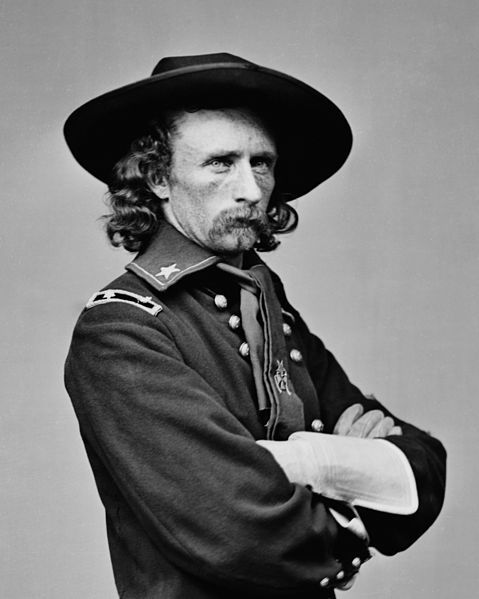
Here’s a great mouth-to-mouth legend about Custer’s Last Stand and the remains of the General….During the 1920s, two elderly Cheyenne women
spoke briefly with oral historians about their having recognized Custer's body on the battlefield, and had stopped a Sioux warrior from desecrating
the body. The women were relatives of Mo-nah-se-tah, who was alleged to have been Custer's one-time lover. In the Cheyenne culture of the time, such a
relationship was considered a marriage. (Which is much like holding hands and jumping over a log together like I did once in the Cree country of Far
North Canada.) The women allegedly told the warrior to "Stop, he is a relative of ours," and then shooed him away. The two women then shoved their
sewing awls into his ears, to permit Custer's corpse to 'hear better in the afterlife' because he had broken his promise to Chief Stone Forehead never
to fight against Native Americans again. So it appears he was never scalped, a hideous mutilation first started by the white man.
When the main column under General Terry arrived two days later, the army found most of the soldiers' corpses stripped, scalped, and mutilated.
Custer's body had two bullet holes, one in the left temple and one just above the heart. Capt. Benteen, who inspected the body, stated that in his
opinion the fatal injuries had not been the result of .45 caliber ammunition, which implies the bullet holes had been caused by ranged rifle fire.

And that’s history for you…..as told by the survivors. 
|


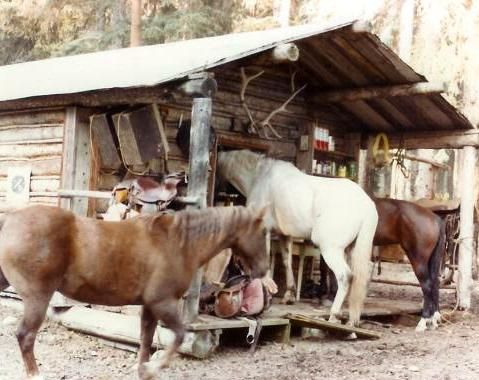


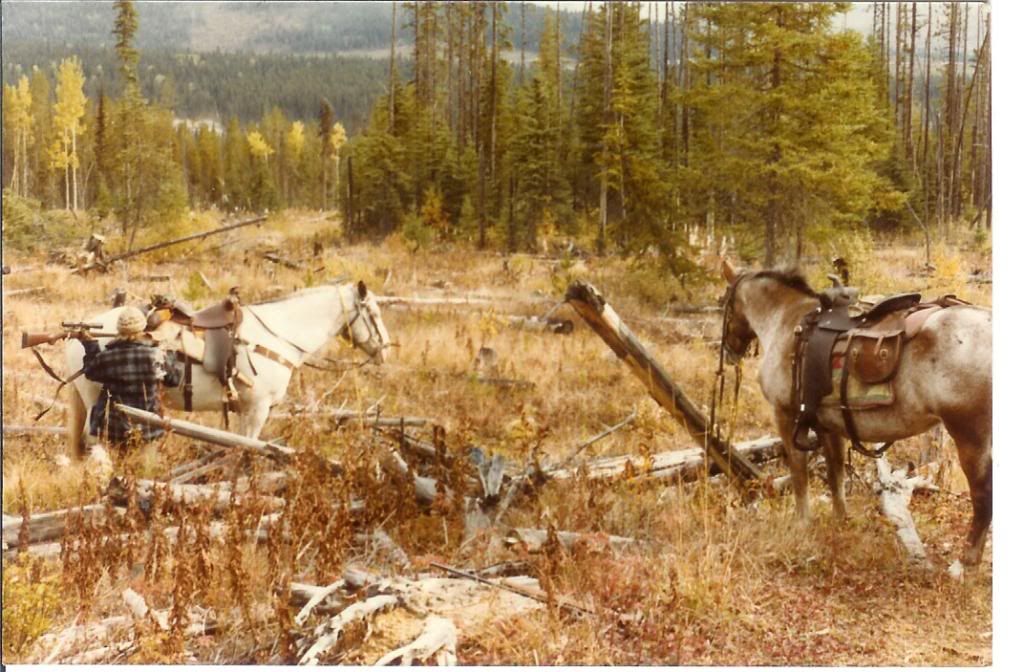

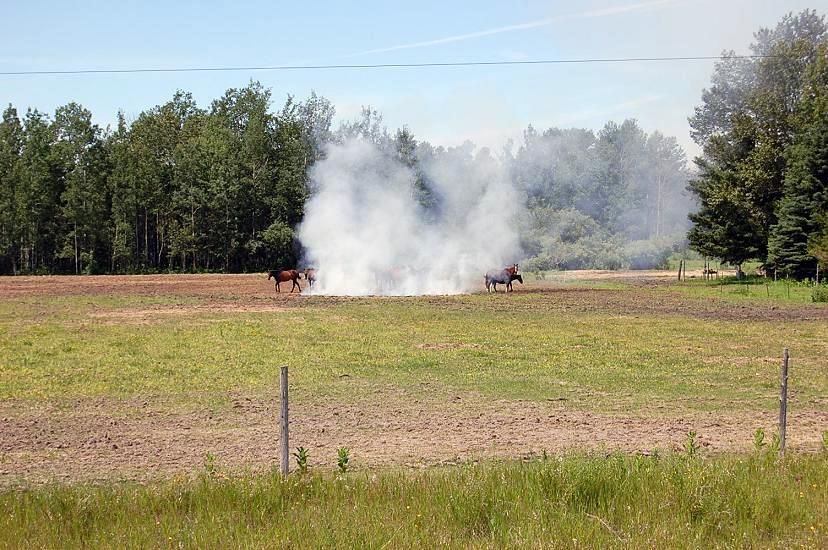
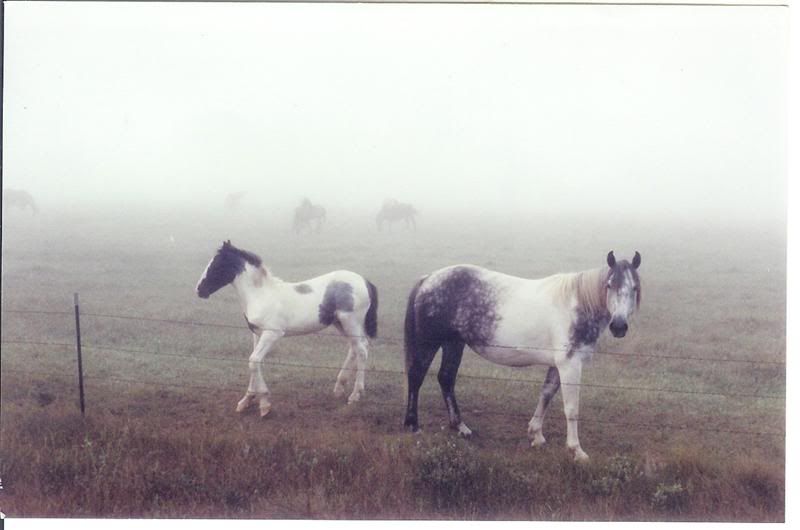


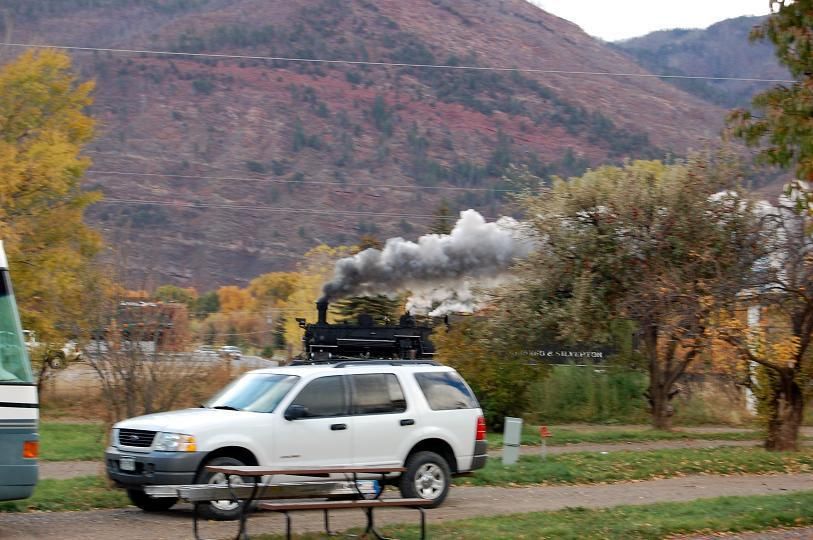
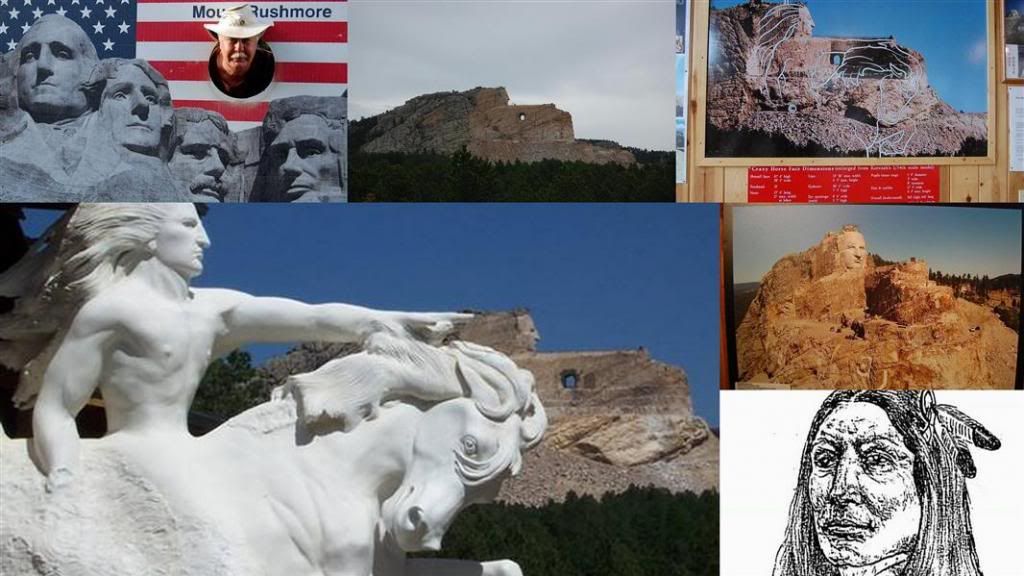
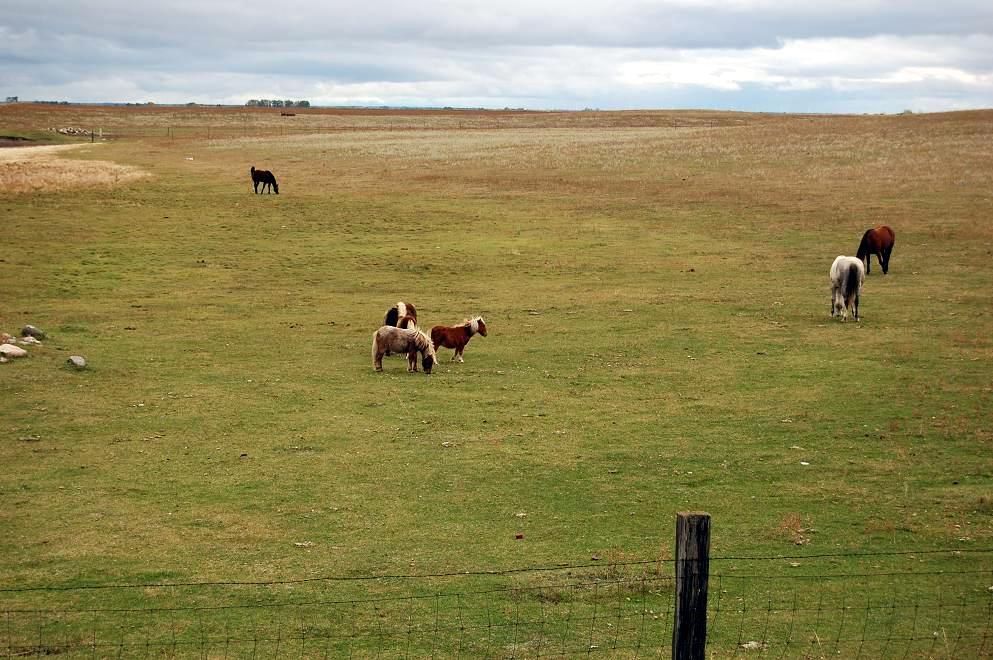

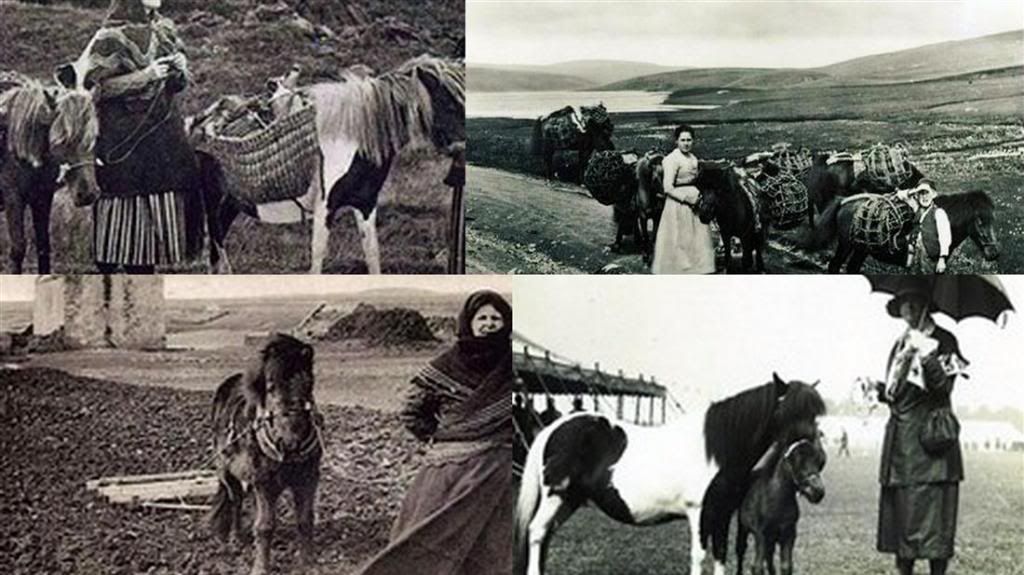




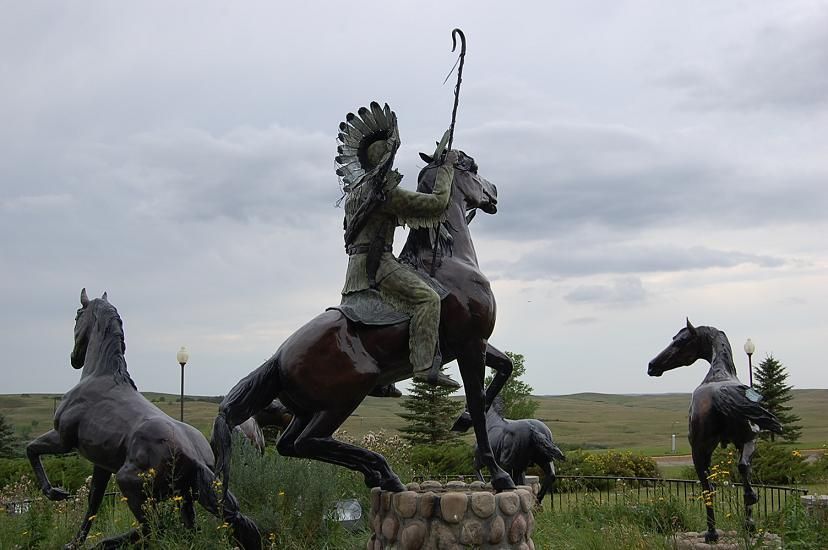













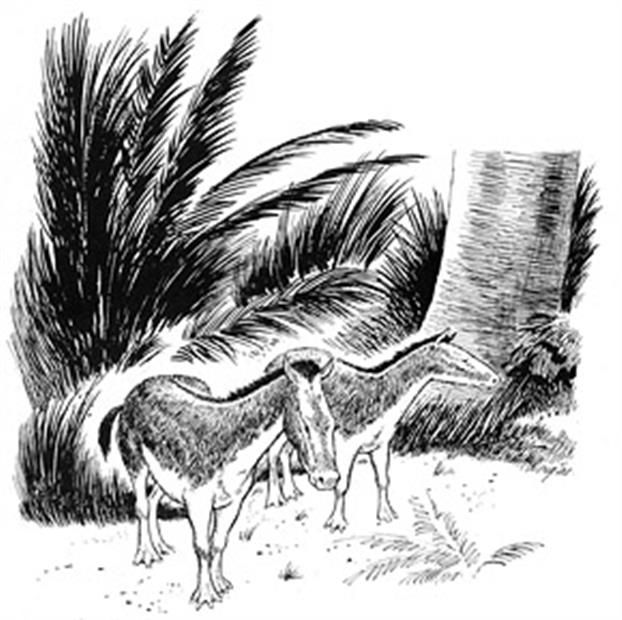

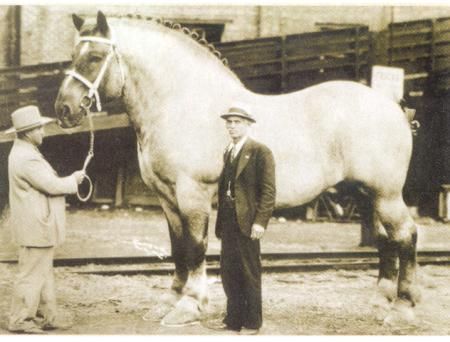
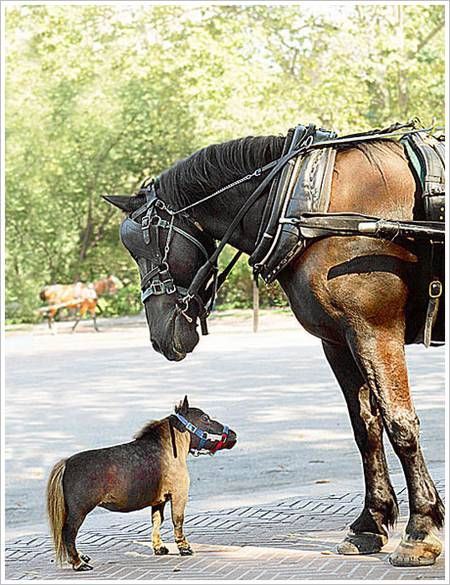
 [/img]
[/img]


